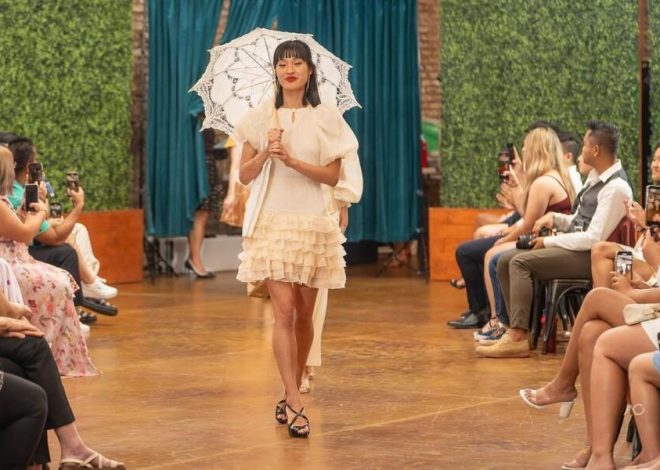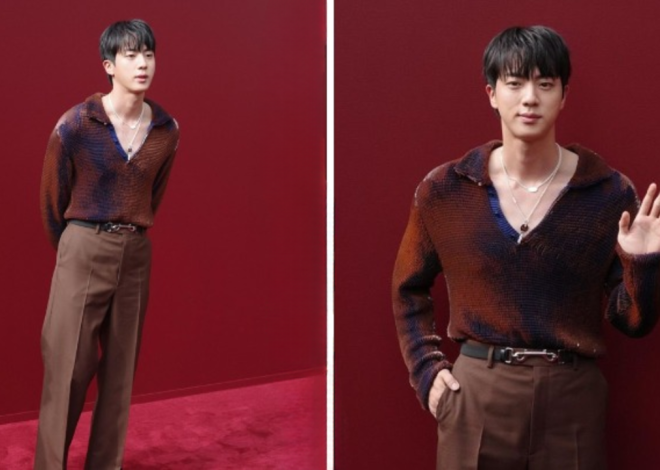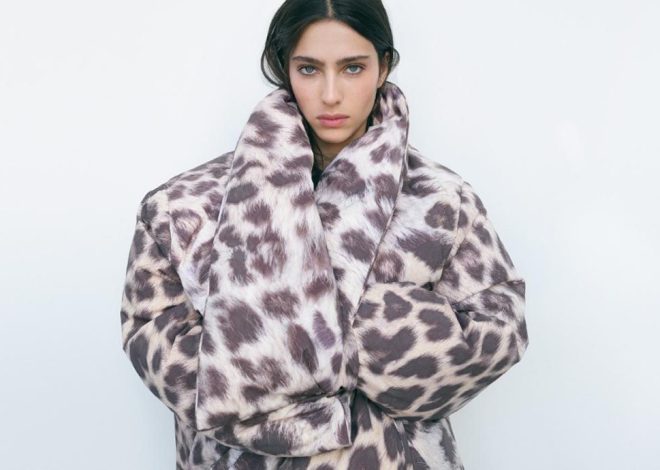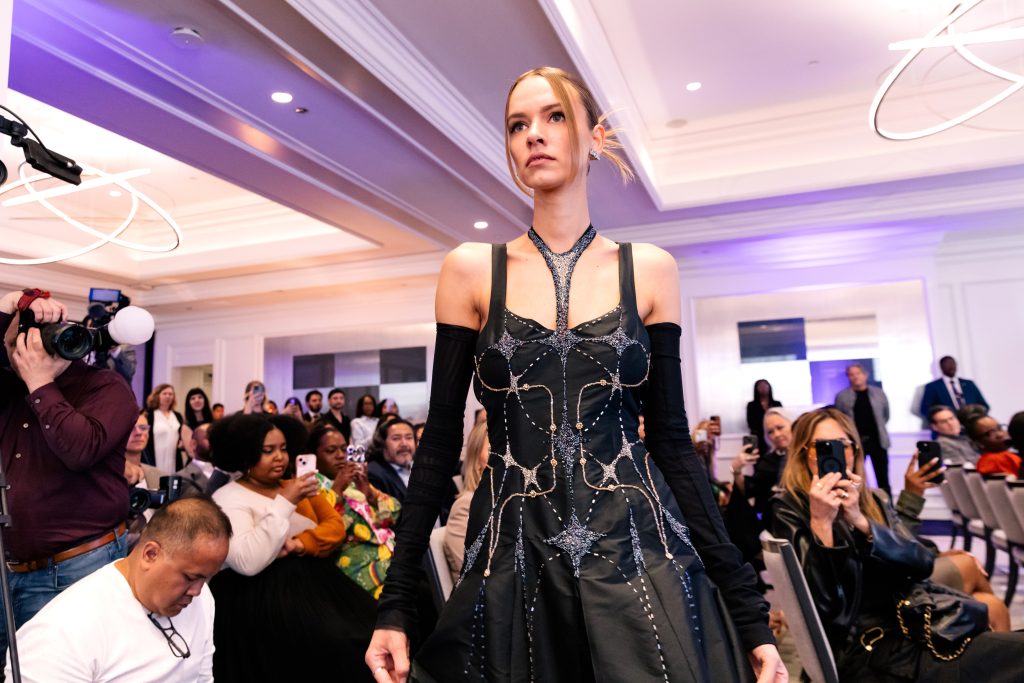
Dress For It: Behind Chicago’s Revitalized Fashion Week with Co-Founders Ian Gerard and Maggie Gillette
Photo: Chicago Fashion Week
Chicago Fashion Week 2024 is set to make its grand debut, marking the first such undertaking in a decade. We sat down with co-founders Ian Gerard and Maggie Gillette to discuss this landmark event—from its decentralized format intended to bring fashion excitement to various neighborhoods and engage the entire city, to the ways it bridges past, present and future, celebrating established designers and rising stars alike. Innovation, inclusivity and community-driven experiences underscore their hopes for the long-term impact of this historic event, poised to establish Chicago as a global fashion capital.
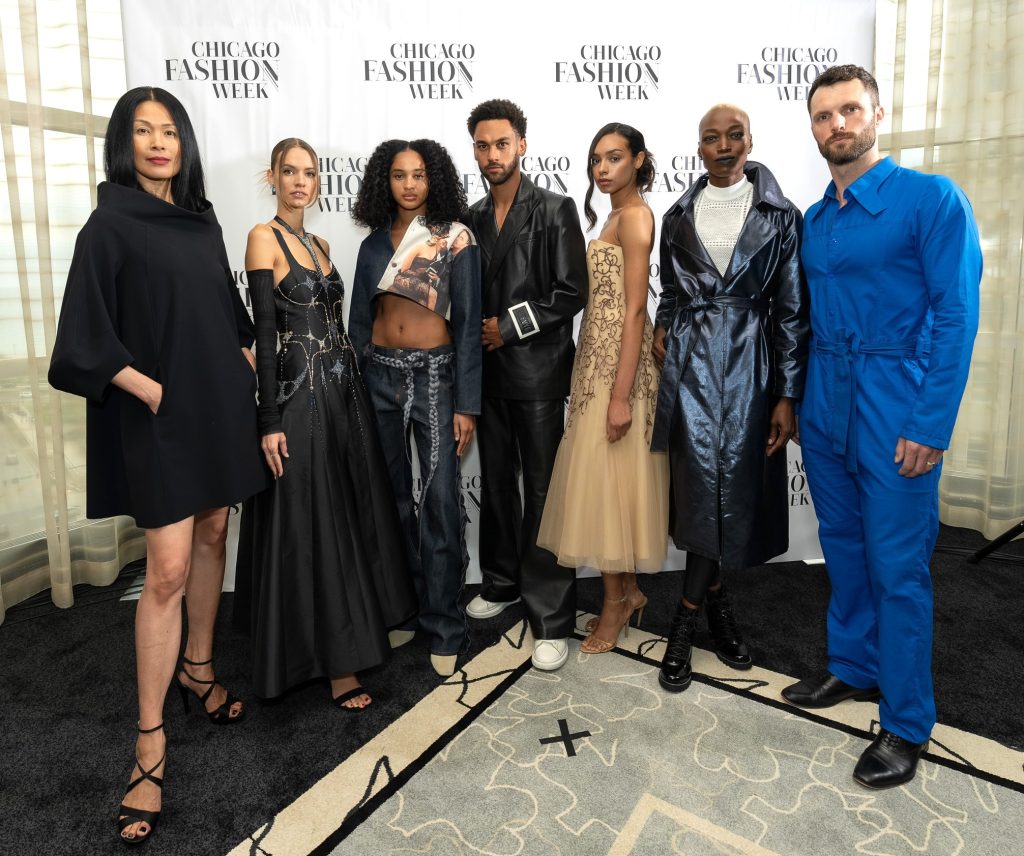
Models from CFW Media Announcement event/Photo: Alex Callejo
What do we know so far about the inaugural Chicago Fashion Week? Can you share some highlights and standout events that attendees can look forward to?
Ian Gerard: Chicago Fashion Week will be unlike any previous official fashion week, the last being Chicago Fashion Focus Week which ran from 2005 to 2014. Unlike its predecessor, which was based around a central location—a tent in Millennium Park—Chicago Fashion Week is a decentralized model. This means that event organizers, designers, retailers and local chambers of commerce can create fashion-oriented programming throughout this great city. This means that many neighborhoods that in the past may have been overlooked will have some type of Fashion Week presence and the program will reach and impact a far greater breadth of Chicagoans. Each day of Chicago Fashion Week will have at least one marquee event, as well as other events in different parts of the city. The marquee events include the opening-night show, produced by The Curio at the magnificent Chicago Cultural Center, the fiftieth-anniversary gala of the Costume Council of the Chicago History Museum, the third annual Chicago Fashion Showcase at the landmark Great Hall of Union Station, the fifth annual Runway Latinx show at CineCity Studios, the Why Not Petites show (an organization breaking barriers in the modeling industry), the sixteenth anniversary of Surround Sound of Fashion—a leader in creating a music and fashion experience, the fourth edition of Asian Fashion Show Chicago, as well as a one-day CFW Vintage + Modern Expo created by the Randolph Street Market team. But that’s the tip of the iceberg, with programming free to the public or nominal ticket prices, that include an outdoor fashion show taking place down the main drag of Fulton Market on the evening of Friday, October 11 for up to 2,000 Chicagoans, Dominican University’s alumni fashion show, Columbia College’s fashion law symposium, and other events at Neiman Marcus, Saks Fifth Avenue, Nordstrom and 900 North Michigan Shops. There will also be many individual designer shows, boutique events and receptions, which taken together with other programming, will provide a menu of fifty-plus fashion events happening throughout Chicago and some suburbs.
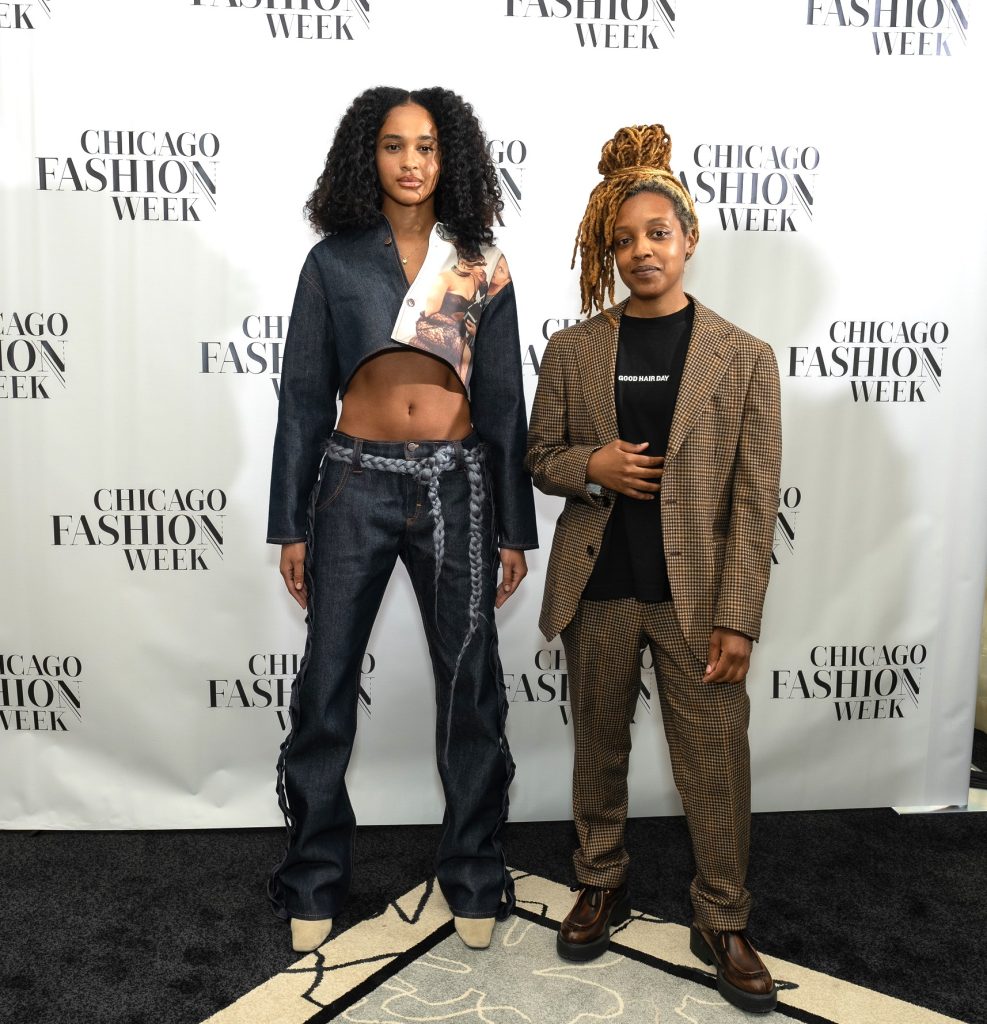
Designer Sheila Rashid and model/Photo: Alex Callejo
How does the fashion week experience bridge Chicago’s fashion history with its future?
Maggie Gillette: This year’s Chicago Fashion Week gives us the unique opportunity to celebrate the city’s past, present and future. There are touchpoints to our history through the Costume Council’s fiftieth-anniversary exhibition, shows with well-established designers like Maria Pinto alongside rising stars like Chelsea B, and educational programs from colleges to help the next generation of Chicago designers.

Mayor and CFW Steering Committee/Photo: Alex Callejo
Tell me about the connection between Chicago and fashion. What are some of the key themes or trends you aim to showcase through this inaugural event, and how do they reflect Chicago’s unique fashion identity?
Gillette: Chicago has always had a strong connection to fashion. Up until the Great Depression, Chicago was a major hub for garment manufacturing. We gave rise to iconic stores like Marshall Field’s, world-famous designers from Halston to Virgil Abloh. Additionally, we are home to some of the top fashion schools. One of the amazing things about Chicago is that there is more individuality and less of a need to follow trends which allows for more creativity and diversity. The city’s fashion scene is much more open and embraces designers with less traditional backgrounds. Chicago is also known for our streetwear scene and CFW will highlight designers whose work is really influenced by our city.
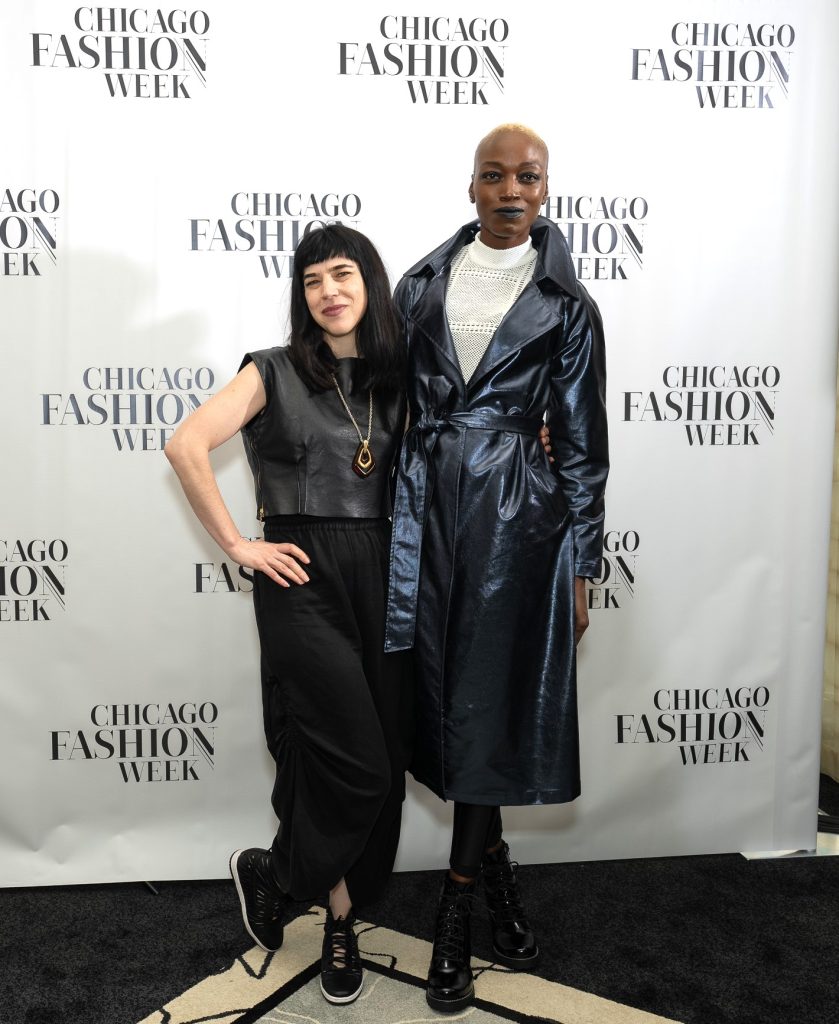
Designer Jamie Hayes of Production Mode and model/Photo: Alex Callejo
You’ve envisioned Chicago Fashion Week for years and are finally bringing this vision to life. What are you most proud of, and what unique challenges did you face along the way?
Gerard: As the former CEO of a company called Gen Art, which was an anchor partner of Chicago Fashion Focus Week, I’ve always believed that Chicago did not get the proper recognition from the national fashion establishment. But with the increasing decentralization of fashion, the rise of fashion weeks in tertiary cities, and the lasting remote work impact of the pandemic, I believed that we were in a moment where there was a rare opportunity for Chicago fashion to gain the recognition it rightly deserves.
When I moved to Chicago full-time to start a family in July of 2020, I quickly learned from my prior contacts here of the demoralized state of the Chicago fashion community. I knew that if I focused my energies solely on this—in addition to my toddler–I could have a positive impact. I believe Maggie felt the same when she returned to Chicago the following year after a decade in New York City. That led to the public launching of The Curio in April of 2022 (as we all emerged from years of masking and isolation) with the goals of uniting a fragmented and demoralized Chicago fashion community, showcasing its best talent, and raising the profile of Chicago fashion. Our ability to quickly make progress on those objectives resulted in discussions with other Chicago fashion leaders and the concept of creating an official Chicago Fashion Week. It was a natural extension of The Curio’s goals, but as a collection of organizations working together, could have a much greater impact than any of us could do alone.
One of the biggest and continuing challenges we face has been uniting all of the different subgroups that comprise Chicago fashion. In the past, it has been a bifurcated world where the Gold Coast charity fashion circuit and the growing and powerful streetwear scene did not intersect. That was something that The Curio has focused on from the start. As newcomers, we approached Chicago fashion holistically. We always showcased a broad array of designers representing all genres of fashion in the same shows, and made sure to highlight members of all communities in our tastemaker talks and other programs. If you attend any Curio event, you will see the broad fashion audience we draw. So, I am proud of what we have achieved so far—but we still have a way to go—to bridge a gap that sadly existed for too long.
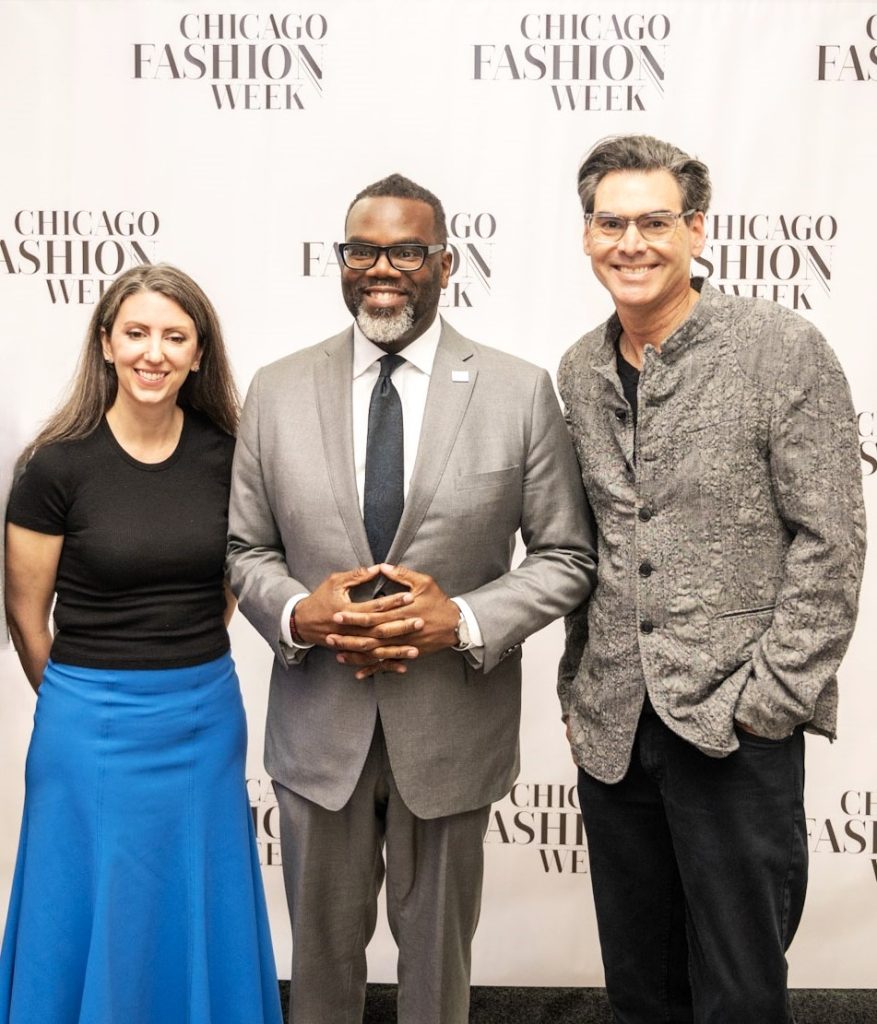
Maggie Gillette, Chicago Mayor Brandon Johnson, Ian Gerard/Photo: Chicago Fashion Week
What are your plans for the future of Chicago Fashion Week, and how do you hope it will impact the city’s fashion industry and culture in the long term?
Gerard: So, this year is all about focusing on Chicago fashion talent, retailers and brands that have a deep connection to Chicago and love for this city. And that approach is bringing so much enthusiasm and energy to the table from all quarters. I think once we have produced a credible year one of Chicago Fashion Week, that the national fashion establishment will see that there is something special happening here and there will be the opportunity to expand our vision. I believe in year two and beyond, there will be much greater national interest in Chicago Fashion Week. This will include designers based in other cities who see the true value of showcasing their talents to consumers in the third largest city in the U.S. with a Chicago metro population of over nine million. And I think it will lead to greater collaborations with national fashion organizations like the Council of Fashion Designers of America which produces the Oscars of the fashion world—the CFDA Fashion Awards—and other organizations like the Fashion Scholarship Fund which is connected to the Virgil Abloh Scholarship Fund. We are in talks with all three organizations. And I think national-brand sponsors will be drawn to Chicago Fashion Week’s consumer—not-industry-insider—approach that exists in some other fashion capitals. Overall, we know even a successful Chicago Fashion Week will not address or cure all obstacles that the Chicago fashion community faces. But it will be a catalyst for additional upgrades and investments in this important artistic and commerce-driven industry. Those investments are necessary for Chicago fashion to not only get by, but to thrive. At the very least, I am extremely confident we will quickly reestablish Chicago as the fashion capital of the Midwest. And then onwards and upwards!
What are you personally most excited about?
Gillette: Honestly, I’m most excited about showing the rest of the city—and country—what I already know; that Chicago is filled with talented designers. We have designers who have been working under the radar honing their craft and when they get the exposure they deserve this October people are going to be blown away by the breadth and depth of talent here.
Chicago Fashion Week runs October 9-20. Find the full schedule here.
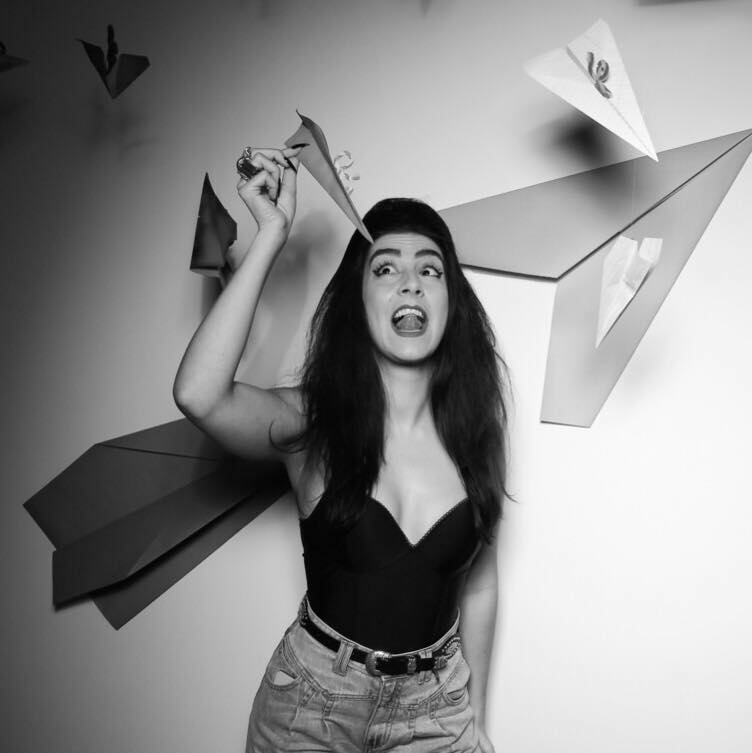
Greek-born Vasia Rigou is a journalist, editor and multimedia content producer largely on the subjects of visual art, culture, architecture and design. She currently serves as an Editor at Newcity, Chicago’s leading culture publication, as Writer and Copy Editor at the International Interior Design Association (IIDA) HQ, and regularly contributes to international architecture and design magazines OnOffice and ICON. She has experience creating content for brands and building conference speeches and influential TEDx talks. Simply put: she’s fascinated by finding out the great stories behind the people, places and objects that surround us, and by sharing those stories with the world. When she’s not writing about art or looking at art—wine in hand—she makes lists for pretty much everything, drinks immense amounts of coffee and takes cross-country road trips every chance she gets.
Contact: [email protected] Website: www.rigouvasia.com
